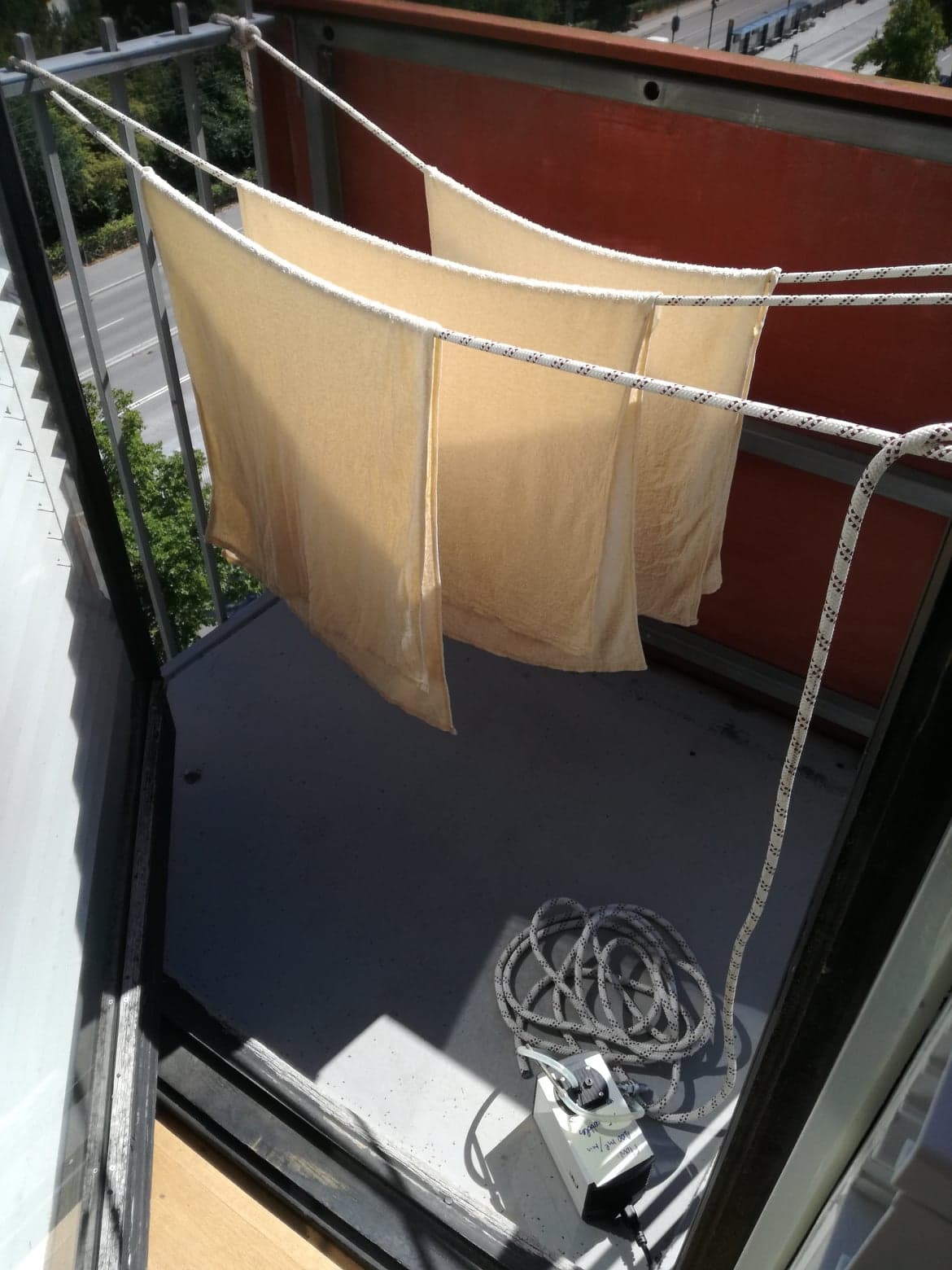When atmospheric chemistry researchers began to wonder why laundry dried outside smells so good, they began by hanging towels outside of the University of Copenhagen's chemistry building in an unusual experiment.
Floral, fruity, citrusy - clothes just smell better when they are dried in the sun rather than in a drier or hung indoors. But what gives them their extra fresh scent?
A group of researchers at the University of Copenhagen's Department of Chemistry looked into this question, releasing their findings in an article published earlier this year. The researchers found a dark empty office in the chemistry building and a sunny balcony where they hung uncolored cotton towels up to dry.
The towels had been washed three times by hand, in ultra clean water in which there were no particles, microorganisms or salts.
By comparing the differently dried towels, the researchers discovered that those that had been sun-dried produced a range of aldehydes and ketones: organic compounds that our noses associate with the scent of plants or perfume.
"The sun-dried towels clearly had the highest concentrations of oxidized compounds (fragrances). In other words, the sun catalyzed photochemical processes that created the fragrances that we found," explains PhD Malte Frydenlund, one of the UCPH researchers behind the study.
For example, line-dried towels emitted pentanal, a compound found in cardamom, octanal, which emits citrus-like aromas and nonanal, which has a rose-like odor.
What the towels smelled like
Here is a list of the most distinctive substances found in the towels and the odors they are associated with:
Methylfuran = Chocolaty
2-Butylfuran = Fruity, sweet
3-Methylbutanal = Fruity, toasted
Nonanoic acid = Waxy
Heptanal = Fruity, green, herbaceous
Octanal = Aldehyde-like, green
2-Heptanone = Fruity, nutty
Nonanal = Fresh, floral, citrusy
Pentanal = Fruity
Ethyl vinyl ketone = Bitter, peppery
2-Methyl-1-propanol = Ether, wine
2-Hexenal = Sweet, almond, fruity, green, leaves
Methacrolein = Floral
Yet to be fully understood
PhD Malte Frydenlund and his partners Silvia Pugliese and Jakob Boyd Pernov, along with their supervisor, Professor Matthew Stanley Johnson of the University of Copenhagen, took a closer look at the phenomenon during the record-warm summer of 2018.
"People laughed and thought it was a bit odd that we were going around with wet towels to hang up and dry," says Malte Frydenlund.
But the research community's understanding of what happens when wet surfaces react with sunlight and air is lacking. As such, this is a very active area of research. While the study primarily served to identify the scents created when laundry is line-dried, Frydenlund has suggestions for how the scents arise:
"When ozone in the air reacts with the materials in a wet towel, aldehydes and ketones are formed - which match the fragrances identified in the study. This could be part of the explanation. But we also think that there is something directly attributable to sunlight. For example, pigments or dyes in towels, found even when the towels are untreated, absorb sunlight and lead to chemical transformations," he says, adding:
"This mechanism can take place on nearly any exposed surface and is important for the degradation of substances in the environment. Therefore, it is incredibly important for us to gain insight into these processes. Hopefully, this study marks a step in that direction."
The experiment explained
The researchers began by hanging three untreated towels to dry on clotheslines: in a dark room, on a balcony exposed to sunlight and on a shaded balcony.
The three types of dried towels were then compared by sealing them in plastic bags for 15 hours, allowing the chemical compounds to be released and contained within the bags.
The air was then sucked from the bags through a GC/MS measuring instrument (gas chromatography-mass spectrometry) to analyze the chemical

compounds. The researchers also analyzed the air in an empty bag and the air at the drying stations to compare with the dried towels.
The researchers' experiments on colored towels generated similar findings, with the identification of large amounts of aldehydes and ketones.
The research is funded by the Department of Chemistry and the University of Copenhagen






